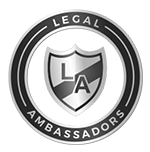How to Respond to a Request for Additional Documentation During the LTD Review Process
On Behalf of Disability Insurance Law Group | | Disability Insurance – General TopicsIf you’ve filed a long-term disability (LTD) claim, receiving a request for additional documentation from the insurance company can feel both stressful and confusing. You may wonder what’s missing, whether your benefits are at risk, and how to respond in a way that supports your claim rather than delays it.
At Disability Insurance Law Group, our claims attorneys work with clients nationwide to protect their rights throughout the LTD review process. Here’s what you need to know if your insurer has asked for more documentation—and how to respond strategically.
Why Insurers Request Additional Documentation
During the review process, the insurance company evaluates whether your medical condition meets the policy’s definition of disability.
If they request more documentation, it’s often because:
- Your initial submission didn’t include all the necessary medical records.
- Your physician didn’t provide sufficient detail on your functional limitations.
- There are inconsistencies between your claim and your records.
- They’re trying to delay or complicate the approval process.
While not every request is made in bad faith, insurers frequently use these requests to pressure claimants or find justification for denial. That’s why how you respond matters.
Step 1: Review the Request Carefully
The first step is understanding exactly what the insurance company is asking for. Requests can range from updated medical records and test results to attending physician statements, functional capacity evaluations (FCEs), or questionnaire responses.
Pay close attention to any deadlines. LTD insurers often offer short turnaround times, and missing a deadline may result in the claim being denied or delayed further.
Step 2: Avoid Responding Hastily or Incompletely
Submitting partial or unclear responses can be as harmful as not responding.
Before sending anything back:
- Make sure the requested records are complete and up to date.
- Ask your medical providers to write clear, specific notes about your limitations that avoid vague statements like “the patient is doing well,” which insurers can misinterpret.
It’s also important not to submit excessive irrelevant information that could create confusion or raise new questions about your claim.
Step 3: Strengthen Your Claim with Strategic Evidence
A request for more documentation is also an opportunity to reinforce your case.
This may include:
- Updated imaging or diagnostic tests.
- Statements from treating specialists.
- Letters from employers describing changes in your job performance.
- A detailed personal statement outlining your daily limitations.
Remember, insurers are looking for specific, measurable evidence that proves your condition prevents you from performing the duties of your occupation.
Step 4: Work with an Experienced Disability Insurance Attorney
Insurers may try to use your response-or lack thereof—as a reason to deny your claim. That’s why legal guidance is essential during this stage.
An experienced disability insurance lawyer can help:
- Interpret the request and clarify ambiguous demands.
- Coordinate with your doctors to ensure proper documentation.
- Respond professionally and strategically to protect your benefits.
At Disability Insurance Law Group, we guide clients nationwide through every phase of the LTD claim process, including how to handle complex document requests. If your insurer has asked for more information, don’t face it alone. Contact us today at 954-989-9000 or online to ensure your response is complete, accurate, and protects your right to long-term disability benefits.





